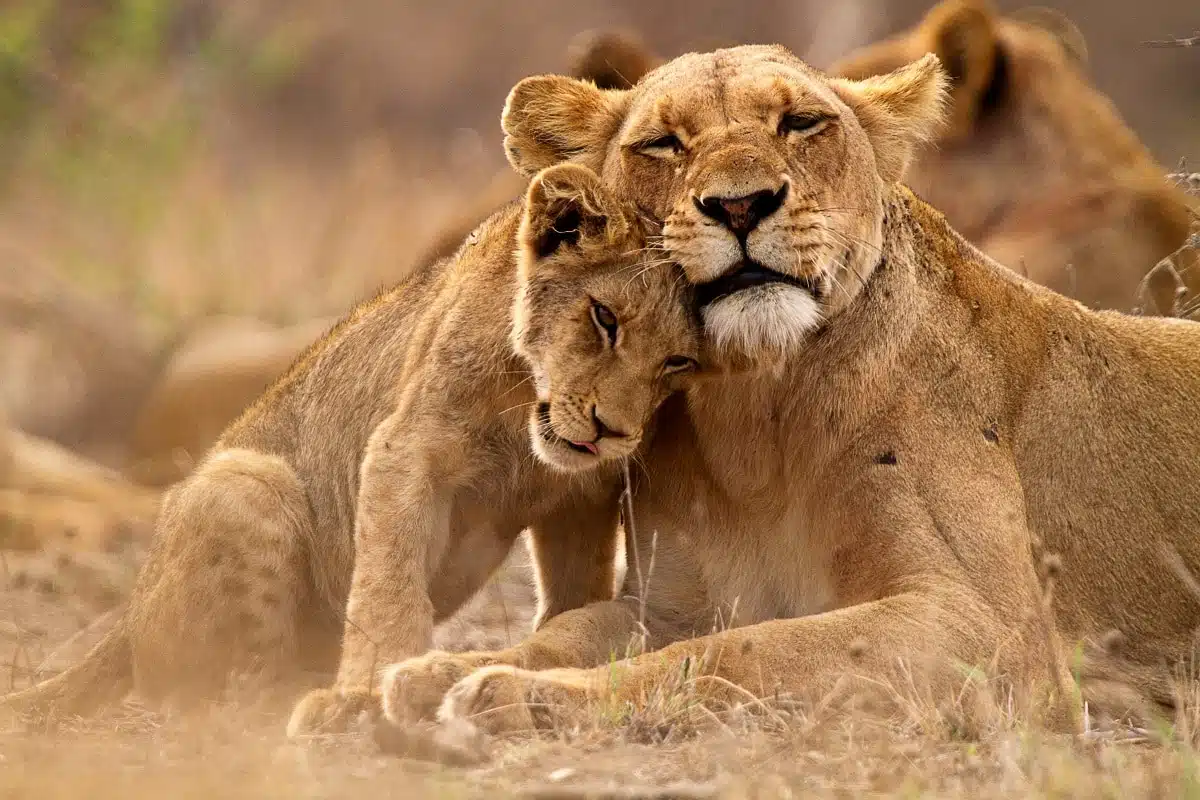Embarking on an African safari is an experience like no other. The continent’s vast and diverse landscapes, rich wildlife, and unique cultural heritage make it a dream destination for nature and adventure enthusiasts. From the savannas of the Serengeti to the deltas of Botswana, each safari destination offers a unique glimpse into the wild heart of Africa. This guide will take you through ten of the best safari experiences in Africa, providing insider tips to help you make the most of your adventure.
Serengeti National Park, Tanzania
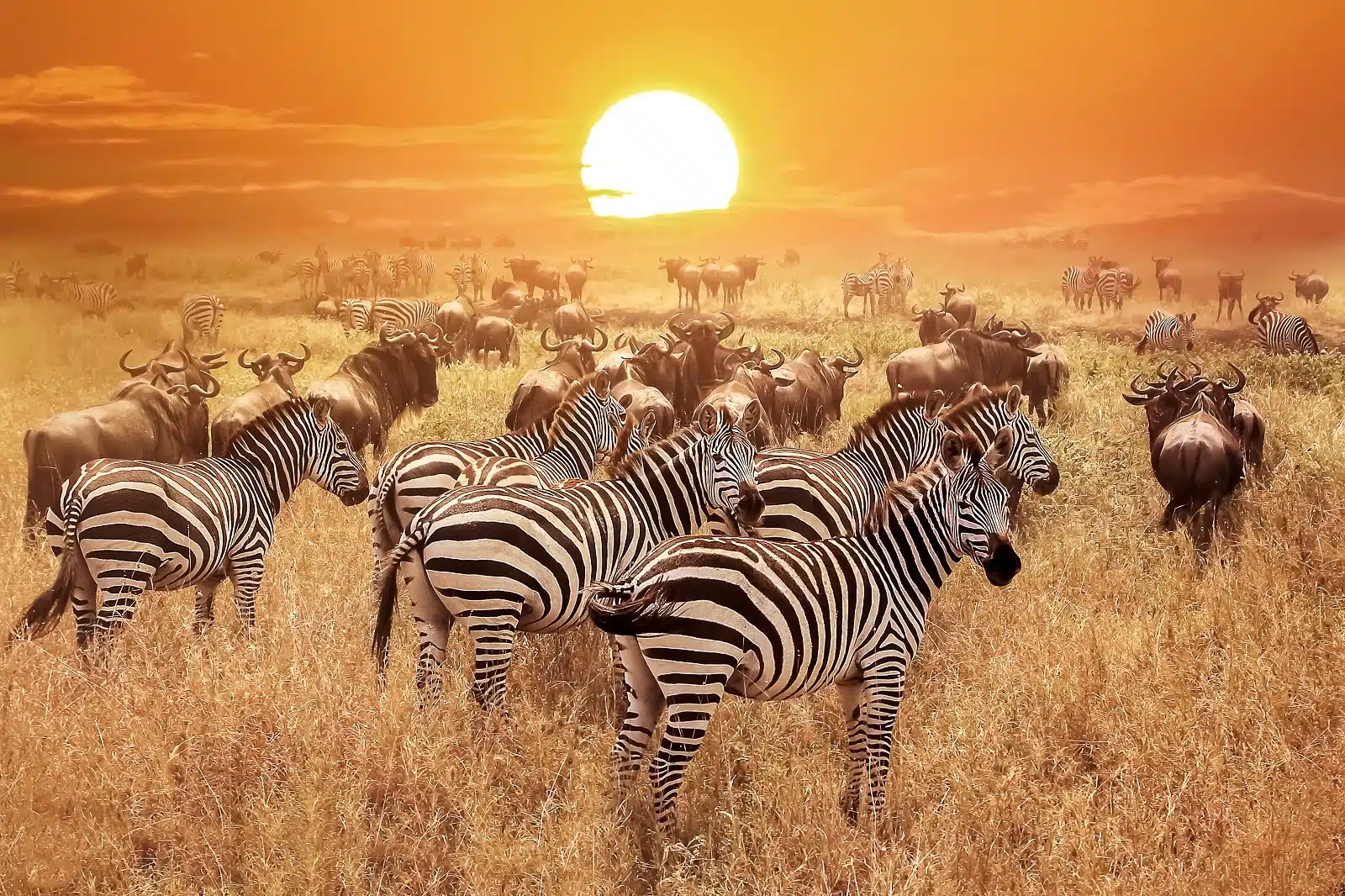
Image Credit: Shutterstock / Delbars
In the Serengeti National Park, you’ll witness the quintessence of the African savanna. The vast open plains are home to the Great Migration, an awe-inspiring natural spectacle where millions of wildebeest and zebras journey in search of greener pastures. The park’s diverse habitats, including riverine forests and swamps, are teeming with wildlife, from lions and leopards to giraffes and elephants. For a unique experience, plan an early morning hot air balloon ride, providing a stunning aerial view of the plains at sunrise.
Insider’s Tip
Book a hot air balloon safari for an unforgettable aerial view of the migration.
When To Travel
June to October for the migration; January and February for the calving season.
How To Get There
Fly to Kilimanjaro International Airport, then a local flight to the Serengeti.
Maasai Mara National Reserve, Kenya
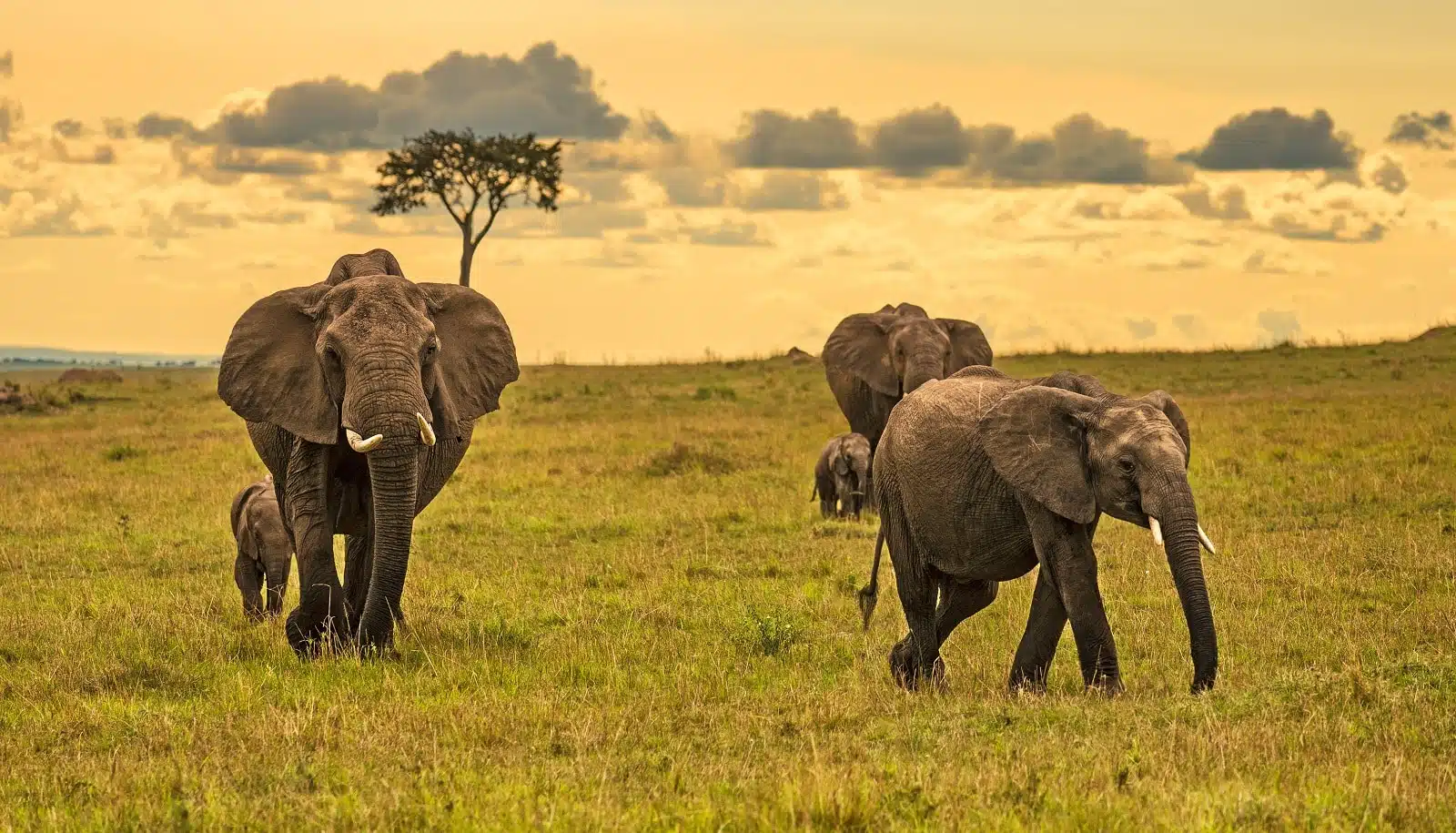
Image Credit: Shutterstock / Nick Fox
In the Maasai Mara, you’ll experience one of Africa’s most abundant wildlife reserves. It is best known for the migration period when massive herds cross the Mara River. However, it’s also home to the Big Five and an excellent location for spotting predators in action. The Mara’s landscape of rolling grasslands and acacia woodlands adds to its charm. Consider visiting a local Maasai village for a cultural insight into the lives of the indigenous community.
Insider’s Tip
Visit a Maasai village for a cultural experience.
When To Travel
July to October for the migration.
How To Get There
Fly to Nairobi, followed by a local flight or drive to the reserve.
Kruger National Park, South Africa
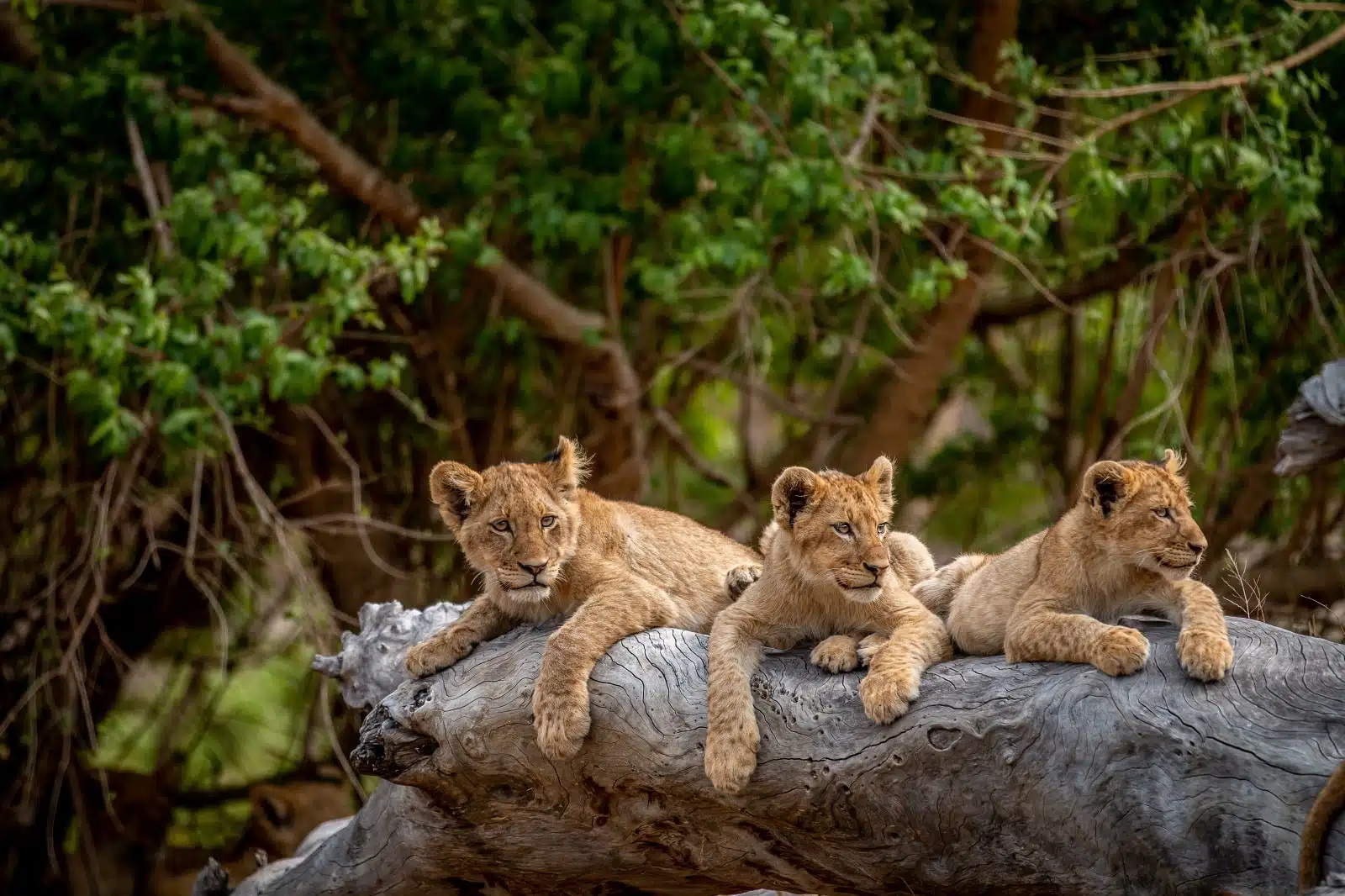
Image Credit: Shutterstock / Simon Eeman
Kruger National Park offers a more accessible safari experience without skimping on wildlife diversity. It’s one of the best places to self-drive, giving you the freedom to explore at your own pace. The park is home to a vast array of animals, including the Big Five, and has a well-developed infrastructure, making it ideal for first-time safari-goers. Stay in one of the park’s private lodges for a more secluded experience and expert-led game drives.
Insider’s Tip
Stay in one of the park’s private lodges for exclusive game drives.
When To Travel
May to September for dry season game viewing.
How To Get There
Fly to Johannesburg, drive to Kruger, or take a local flight to nearby airports.
Chobe National Park, Botswana

Image Credit: Shutterstock / Janelle Lugge
Chobe National Park is renowned for its large elephant population and river safaris on the Chobe River. These unique water-based safaris offer a different perspective and the opportunity to see a variety of aquatic wildlife and birds. The park’s proximity to Victoria Falls makes it easy to combine your safari with one of the world’s most spectacular natural wonders. The dry season brings large concentrations of wildlife to the riverbanks, making for exceptional game viewing.
Insider’s Tip
Combine your visit with a trip to Victoria Falls.
When To Travel
May to October for the dry season.
How To Get There
Fly to Kasane Airport or drive from Victoria Falls or Livingstone.
Okavango Delta, Botswana
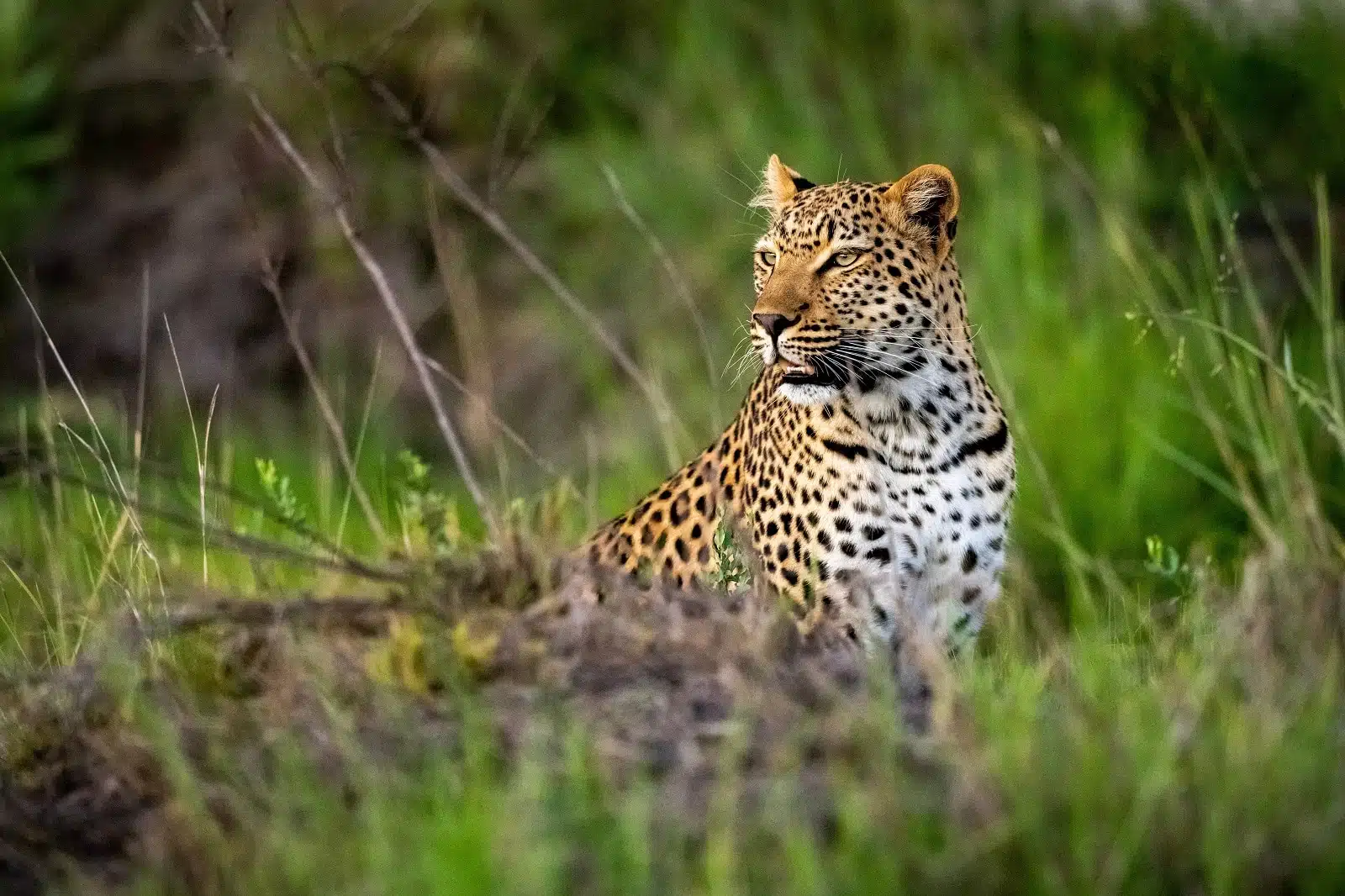
Image Credit: Shutterstock / Richard Juilliart
The Okavango Delta is a unique wetland within a desert, offering an unparalleled safari experience. The annual flooding of the delta creates a lush habitat for a diverse array of wildlife. Exploring the delta by mokoro, a traditional dugout canoe, is a serene and intimate way to experience this unique ecosystem. Staying in a bush camp on one of the delta’s islands provides an immersive wilderness experience.
Insider’s Tip
Book a bush camp on one of the delta’s islands.
When To Travel
July to October for the flood season.
How To Get There
Fly to Maun Airport, then take a charter flight to the delta.
Etosha National Park, Namibia
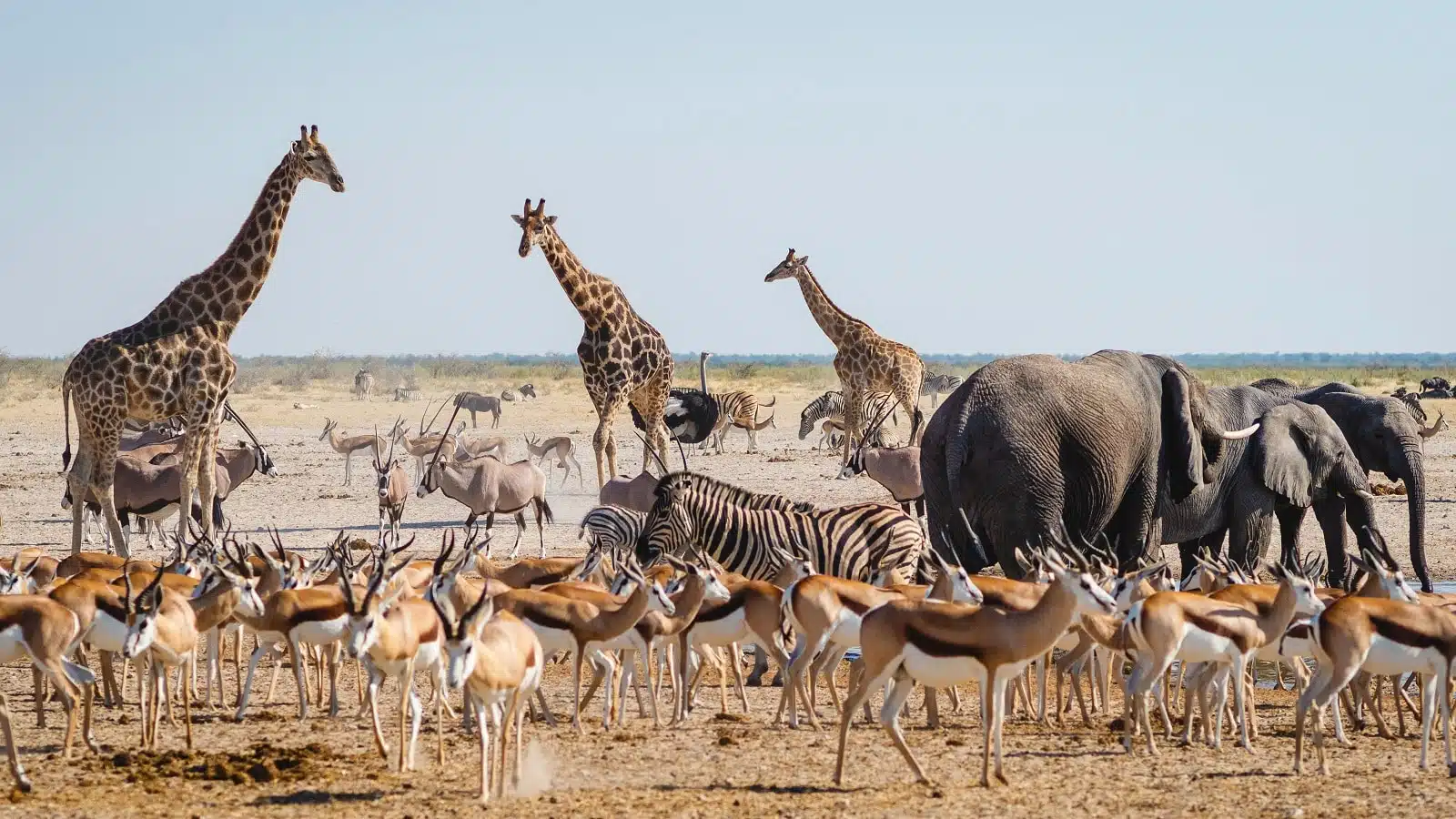
Image Credit: Shutterstock / R.M. Nunes
Etosha National Park is centered around the vast Etosha Salt Pan, providing a unique backdrop for wildlife viewing. The park’s numerous waterholes attract a variety of animals, particularly during the dry season, making it an excellent location for photographers. Night-time game viewing at the waterholes offers a chance to see nocturnal species and unique animal behaviors not typically observed during the day.
Insider’s Tip
Stay inside the park for night-time waterhole viewing.
When To Travel
May to October for the dry season.
How To Get There
Fly to Windhoek, then drive or take a local flight to Etosha.
Ngorongoro Crater, Tanzania
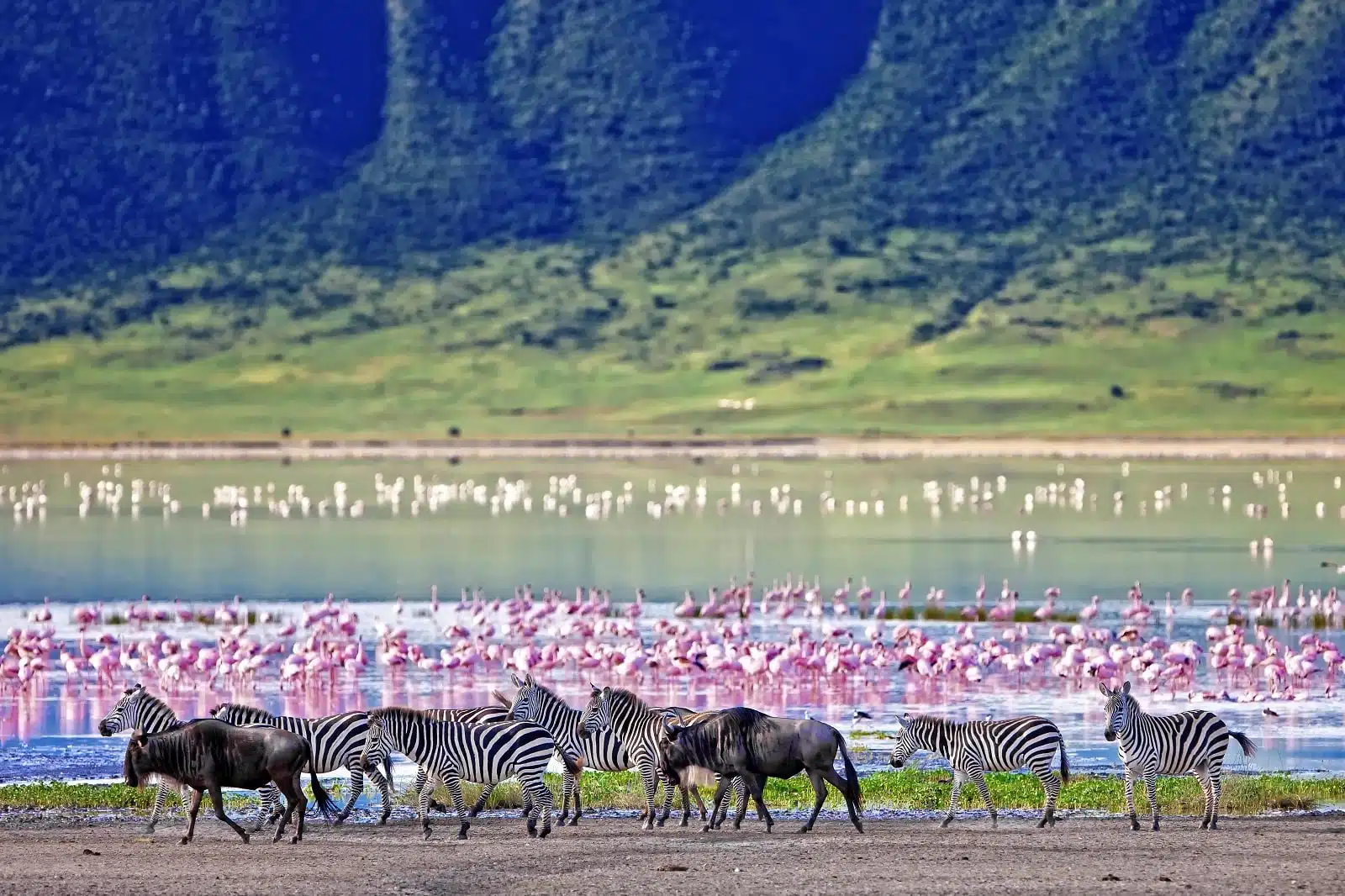
Image Credit: Shutterstock / Travel Stock
The Ngorongoro Crater offers a once-in-a-lifetime safari experience. As you descend into the world’s largest inactive, intact, and unfilled volcanic caldera, you’ll find an abundance of wildlife in this natural amphitheater. The crater floor is home to over 25,000 animals, including the endangered black rhino. Early morning visits allow for fewer crowds and more active wildlife.
Insider’s Tip
Visit the crater early in the morning to avoid crowds.
When To Travel
June to September for cooler weather and optimal wildlife viewing.
How To Get There
Fly to Kilimanjaro Airport, then drive or take a local flight.
South Luangwa National Park, Zambia
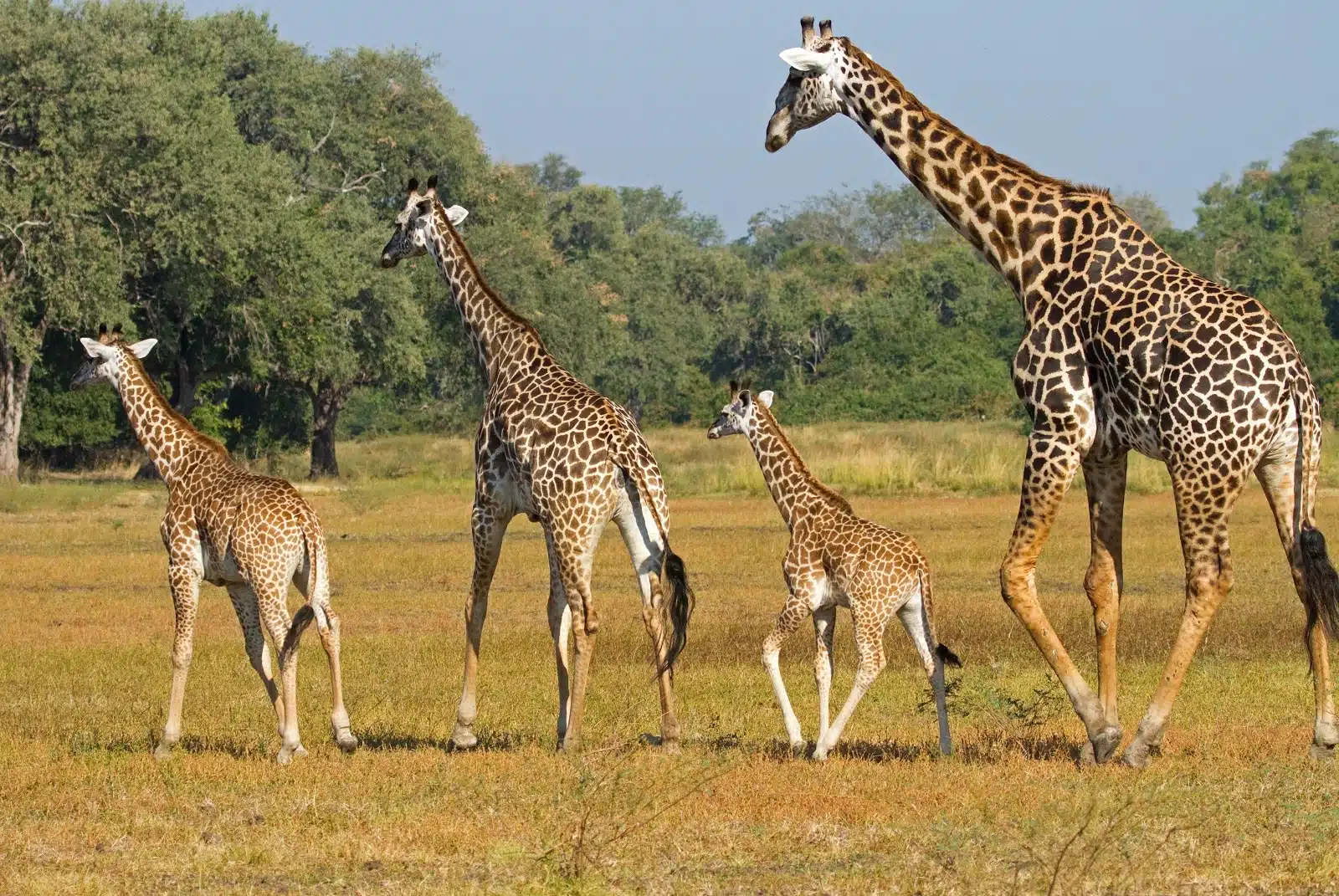
Image Credit: Shutterstock / paula french
South Luangwa National Park is a haven for those seeking a more adventurous safari. Known as the birthplace of the walking safari, it offers an intimate and immersive experience. The park is renowned for its high-quality guides and exceptional leopard sightings. Night drives here are especially rewarding, with chances to see nocturnal animals like genets, civets, and bush babies.
Insider’s Tip
Try a night drive for a chance to see nocturnal animals.
When To Travel
July to October for the dry season.
How To Get There
Fly to Lusaka, then take a local flight to Mfuwe Airport.
Hwange National Park, Zimbabwe
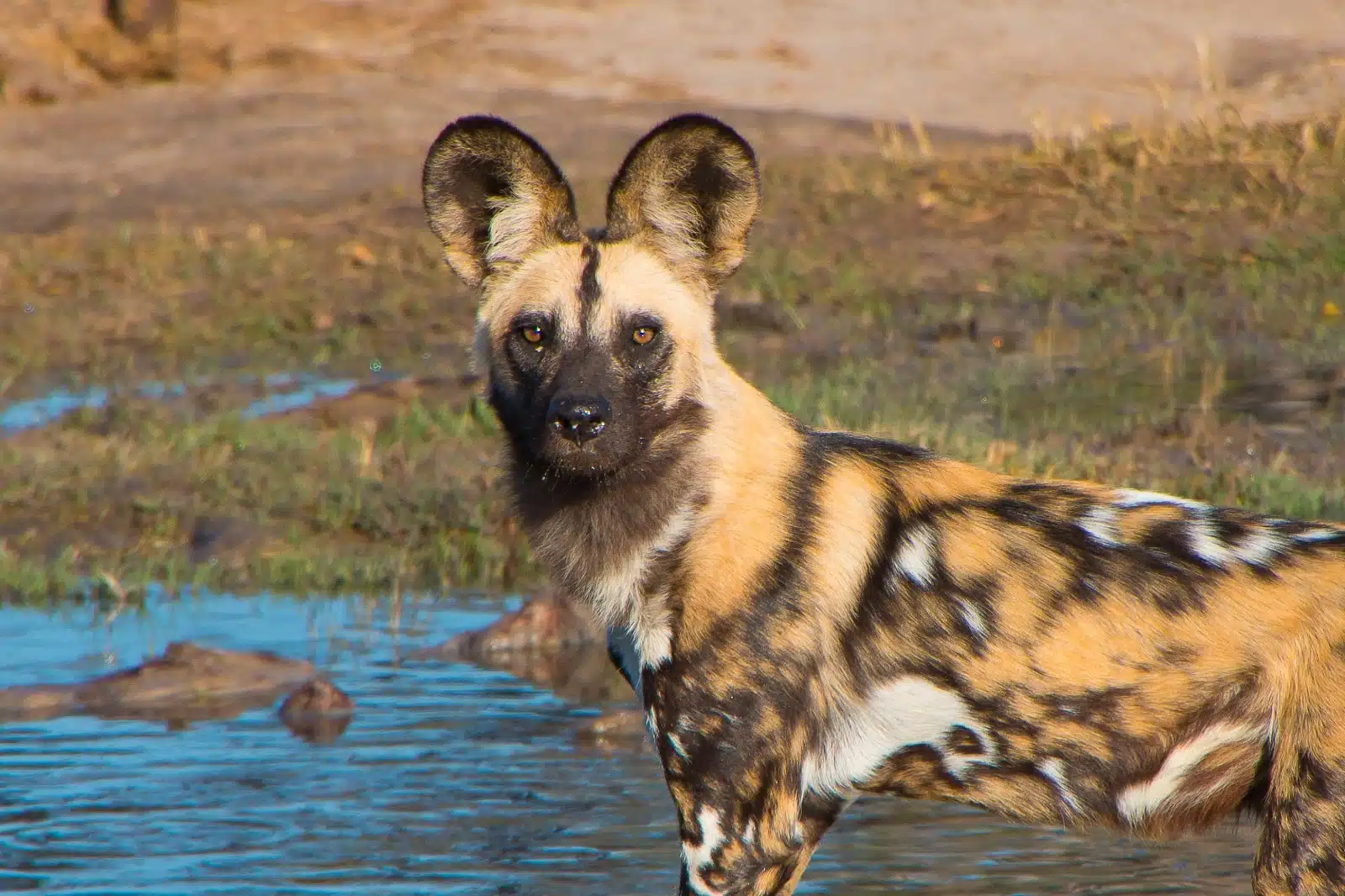
Image Credit: Shutterstock / bart acke
Hwange National Park, the largest in Zimbabwe, is known for its vast elephant herds and diverse landscapes ranging from desert sands to forests. It’s also one of the best places to see African wild dogs. The park’s numerous waterholes are magnets for wildlife, especially during the dry season, offering superb game viewing opportunities.
Insider’s Tip
Visit the park’s waterholes for excellent game viewing.
When To Travel
July to October for the dry season.
How To Get There
Fly to Victoria Falls, then drive to Hwange.
Queen Elizabeth National Park, Uganda

Image Credit: Shutterstock / Silvia Truessel
Queen Elizabeth National Park offers a diverse safari experience, with landscapes including savannas, wetlands, and forests. It’s an excellent location for seeing tree-climbing lions and various primates, including chimpanzees. A boat trip on the Kazinga Channel is a must, providing close encounters with hippos, crocodiles, and a variety of water birds.
Insider’s Tip
Take a boat trip on the Kazinga Channel to see hippos and crocodiles.
When To Travel
January to February and June to July for dry weather.
How To Get There
Fly to Entebbe, then drive to the park or take a local flight.
The Bottom Line
Your African safari adventure awaits, with each destination offering a unique window into the continent’s incredible wildlife and landscapes. Whether you’re floating down the Okavango Delta, witnessing the Great Migration in the Serengeti, or walking among the wildlife in South Luangwa, these experiences will leave you with memories to last a lifetime. Choose your destination based on the wildlife you want to see and the type of safari experience you’re after. Get ready for an adventure that will bring you face-to-face with the wonders of the African wild.
Featured Image Credit: Shutterstock / Thomas Retterath.
Tips for Trip Success
Book Your Flight
Find an inexpensive flight by using Kayak, a favorite of ours because it regularly returns less expensive flight options from a variety of airlines.
Book Your Hotel or Special Accommodation
We are big fans of Booking.com. We like their review system and photos. If we want to see more reviews and additional booking options, we go to Expedia.
You Need Travel Insurance!
Good travel insurance means having total peace of mind. Travel insurance protects you when your medical insurance often will not and better than what you get from your credit card. It will provide comprehensive coverage should you need medical treatment or return to the United States, compensation for trip interruption, baggage loss, and other situations.Find the Perfect Insurance Plan for Your Trip
